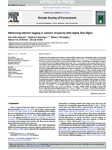Use este identificador para citar ou linkar para este item:
http://www.alice.cnptia.embrapa.br/alice/handle/doc/971828Registro completo de metadados
| Campo DC | Valor | Idioma |
|---|---|---|
| dc.contributor.author | ANDERSEN, H. E. | pt_BR |
| dc.contributor.author | REUTEBUCH, S. E. | pt_BR |
| dc.contributor.author | MCGAUGHEY, R. J. | pt_BR |
| dc.contributor.author | OLIVEIRA, M. V. N. D. | pt_BR |
| dc.contributor.author | KELLER, M. | pt_BR |
| dc.date.accessioned | 2013-11-21T11:11:11Z | pt_BR |
| dc.date.available | 2013-11-21T11:11:11Z | pt_BR |
| dc.date.created | 2013-11-21 | pt_BR |
| dc.date.issued | 2013 | pt_BR |
| dc.identifier.citation | Remote Sensing of Environment, v. 11, n. 3, p. 5783-5804, 2013. | pt_BR |
| dc.identifier.uri | http://www.alice.cnptia.embrapa.br/alice/handle/doc/971828 | pt_BR |
| dc.description | The objective of this study was to test the use of repeat flight, airborne laser scanning data (lidar) for estimating changes associatedwith low-impact selective logging (approx. 10?15 m3 ha−1 = 5?7% of total standing volume harvested) in natural tropical forests in the Western Brazilian Amazon. Specifically, we investigated change in area impacted by selective logging, change in tall canopy (30 m+) area, change in lidar canopy structuremetrics, and change in above ground biomass (AGB) using a model-based statistical framework. Ground plot measurements were only available from the time of the 2010 lidar acquisition. A simple differencing of the 2010 and 2011 lidar canopy height models identified areas where canopy over 30 m tall had been removed. Area of tall canopy dropped from 22.8% in 2010 to 18.7% in 2011, a reduction of 4.1%. Using a relative density model (RDM) technique the increase in area of roads, skidtrails, landings, and felled tree gaps was estimated to be 17.1%. A lidar-based regression model for estimating AGB was developed using lidar metrics from the 2010 lidar acquisition and corresponding AGB ground plot measurements. The estimator was then used to compute AGB estimates for the site in 2010 and 2011 using the 2010 and 2011 lidar acquisition data, respectively. A model-based statistical approach was then used to estimate the uncertainty of the changes in AGB between the acquisitions. Change in RDMs between lidar acquisitions was used to classify each 50 m cell in the study area as impacted or non-impacted by logging. The change in mean AGB for the entire study area was −9.1 Mg ha−1 ± 1.9 (mean ± SD) (P-value b 0.0001). The change in mean AGB for areas newly impacted in 2011 was −17.9 ± 3.1 Mg ha−1 (P-value b 0.0001) while the change in mean AGB for non-impacted areaswas significantly less at−2.6 ± 1.1 Mg ha−1 (P-value = 0.009). These results provide corroborating evidence of the spatial extent and magnitude of change due to low-intensity logging in tropical forests with heavy residual canopy cover. | pt_BR |
| dc.language.iso | por | pt_BR |
| dc.rights | openAccess | pt_BR |
| dc.subject | Airborne laser scanning | pt_BR |
| dc.subject | Amazon forest monitoring | pt_BR |
| dc.subject | Forest biomass | pt_BR |
| dc.subject | Selective logging | pt_BR |
| dc.subject | Tropical forest management | pt_BR |
| dc.title | Monitoring selective logging in western Amazonia with repeat lidar flights. | pt_BR |
| dc.type | Artigo de periódico | pt_BR |
| dc.date.updated | 2013-11-25T11:11:11Z | pt_BR |
| dc.subject.nalthesaurus | Lidar | pt_BR |
| riaa.ainfo.id | 971828 | pt_BR |
| riaa.ainfo.lastupdate | 2013-11-25 | pt_BR |
| dc.identifier.doi | 10.1016/j.rse.2013.08.049 | pt_BR |
| dc.contributor.institution | HANS-ERIK ANDERSEN, USDA FOREST SERVICE/UNIVERSITY OF WASHINGTON; STEPHEN E. REUTEBUCH, USDA FOREST SERVICE/UNIVERSITY OF WASHINGTON; ROBERT J. MCGAUGHEY, USDA FOREST SERVICE/UNIVERSITY OF WASHINGTON; MARCUS VINICIO NEVES D OLIVEIRA, CPAF-AC; MICHAEL KELLER, PESQUISADOR VISITANTE CNPM. | pt_BR |
| Aparece nas coleções: | Artigo em periódico indexado (CNPM)  | |
Arquivos associados a este item:
| Arquivo | Descrição | Tamanho | Formato | |
|---|---|---|---|---|
| MonitoringselectivelogginginwesternAmazoniawithrepeatlidarflights.pdf | 3,26 MB | Adobe PDF |  Visualizar/Abrir |









